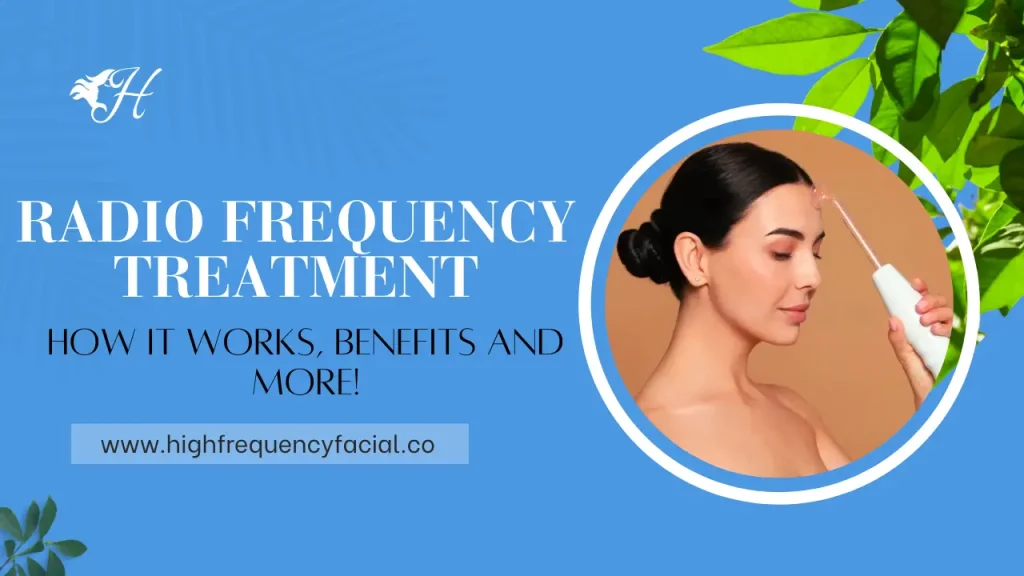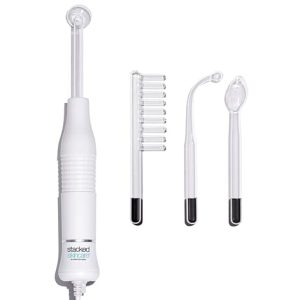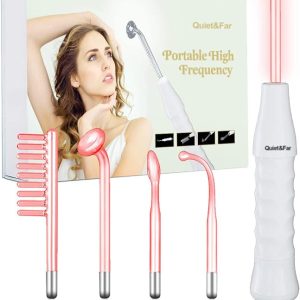Radiofrequency treatment is a non-invasive method that employs electromagnetic waves to revitalize your skin.
In this guide, we’ll explore what radiofrequency treatments are. , their direct benefits, potential side effects, and the simple science behind their effectiveness.
This article breaks down the essentials of radiofrequency treatment in expert yet easy-to-understand terms. Let’s explore together!


What is Radiofrequency Treatment?
Radiofrequency treatment is a medical and cosmetic procedure that uses radiofrequency energy to heat tissue. In cosmetic procedures, it’s commonly used for skin tightening, cellulite reduction, and other skin benefits.
The technology being used in it is different from microcurrent and high-frequency facial. This technology also has applications in medical treatments like cardiac and tumor ablation.
The procedure involves a device emitting RF energy applied to the skin or targeted tissue. This penetrates and heats the underlying layer, known as dermis, promoting:
- Skin Tightening
- Wrinkle Reduction
- Cellulite Reduction
- Improved Skin Texture
- Collagen Production
RF treatments are generally non-invasive, with minimal downtime compared to surgery.
Effectiveness can vary based on the device, target area, and individual factors. Consult a qualified healthcare professional or licensed practitioner to determine if radiofrequency treatment is suitable for your specific condition or cosmetic goal.
What Does Radio Frequency (Rf) Skin Tightening Treat?
Radiofrequency treatment treats these concerns:
- Sagging Skin
- Wrinkles and Fine Lines
- Cellulite
- Jowls and Jawline Definition
- Neck Laxity
- Body Contouring
- Overall Skin Rejuvenation
How Long Does Radio Frequency Skin Treatment Last?
The effects of radiofrequency treatment last for one to three years with proper skin care.
Results from radiofrequency (RF) skin treatment can be seen within 1-2 weeks, with full effects taking 6 weeks or more. The most significant improvements may appear up to six months post-treatment.
The number of sessions needed depends on the severity of age-related skin changes and lifestyle factors, like smoking.
Typically, patients require three to five sessions for optimal results. It’s essential to follow post-treatment care instructions and consider lifestyle choices for prolonged benefits. Regular consultations with a professional can guide the ideal treatment plan based on individual needs.


Risks/Side Effects:
Here are some risks/side effects associated with RF treatments:
- Redness and Swelling: Typically temporary and resolves within a few hours or days.
- Bruising: Usually temporary but can last for a few days.
- Numbness or Tingling: Temporary and tends to resolve on its own.
- Changes in Skin Pigmentation: Rare but may occur, especially in individuals with darker skin tones.
- Burns or Blisters: Rare, but can occur if there is excessive heat or incorrect application. This risk is minimized with proper technique.
- Scarring: Rare, and usually associated with infection or poor wound care. Most cases are avoidable with proper post-treatment care.
- Pain or Discomfort: Temporary and can be managed with over-the-counter pain medications.
Is Rf Treatment Safe?
Radiofrequency (RF) treatment has been recognized as a safe and effective procedure when administered by qualified professionals. Utilizing radio waves to boost collagen, elastin, fat loss, and skin cell production, this treatment promotes healthier skin over time.
The risk of skin discoloration (hyperpigmentation) is minimal, and the treatment is most effective for individuals showing initial signs of aging.
Selecting a qualified professional and following the recommended guidelines are essential steps to guarantee the best results and reduce any potential risks linked to RF skin treatment.
Who Shouldn’t Go For Rf Skin Treatments?
Individuals with certain health conditions or characteristics should avoid RF skin treatments. This includes:
- Pregnant Women
- Individuals with Skin Infections
- People with Metal Implants
- Recent Sunburn
- Patients on Blood Thinners
- Severe Skin Disorders
Always consult with a qualified healthcare professional or licensed practitioner to determine if RF skin treatments are appropriate for your specific situation. They can provide personalized advice based on your health history and individual characteristics.
Aftercare:
After undergoing radiofrequency (RF) treatment, it’s crucial to follow proper aftercare to optimize results and minimize potential side effects.
- Firstly, protect treated areas from direct sun exposure for at least a week, using sunscreen with a high SPF. Avoid hot baths, saunas, or vigorous exercise for 48 hours post-treatment to prevent excessive sweating.
- Additionally, refrain from using harsh skincare products, such as exfoliants or retinoids, in the treated area for a few days.
- Stay well-hydrated to support the skin’s healing process and consider using gentle moisturizers to alleviate any dryness or mild irritation.
- If there are specific post-treatment instructions provided by your practitioner, adhere to them diligently.
- If you experience persistent redness, swelling, or any unexpected symptoms, promptly consult your healthcare professional for guidance.
Conclusion:
Radiofrequency (RF) treatment is a versatile and effective solution for various skin concerns.
Using RF energy, it tightens skin, reduces wrinkles and cellulite, and promotes collagen production. The effects can last one to three years with proper care. Though generally safe, potential side effects include temporary redness, swelling, and bruising. Consult with a healthcare professional for suitability based on individual health.
Following post-treatment care, including sun protection and avoiding harsh products, ensures optimal results. RF treatment offers a non-surgical option for those seeking lasting skin improvements.






